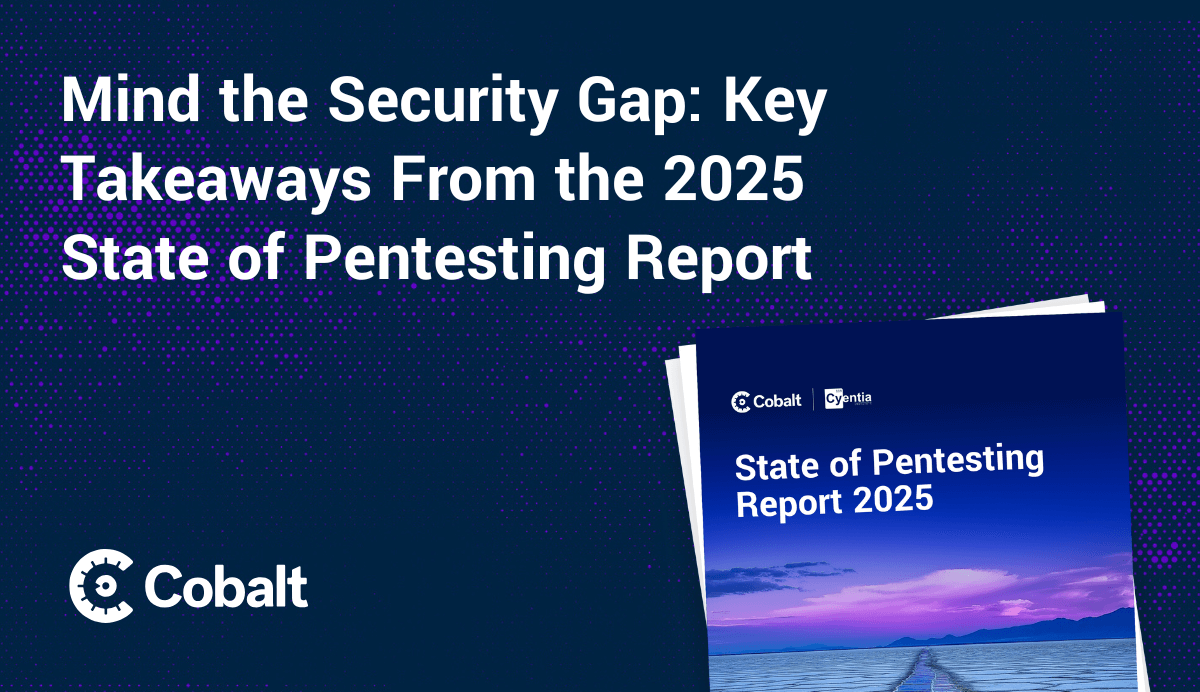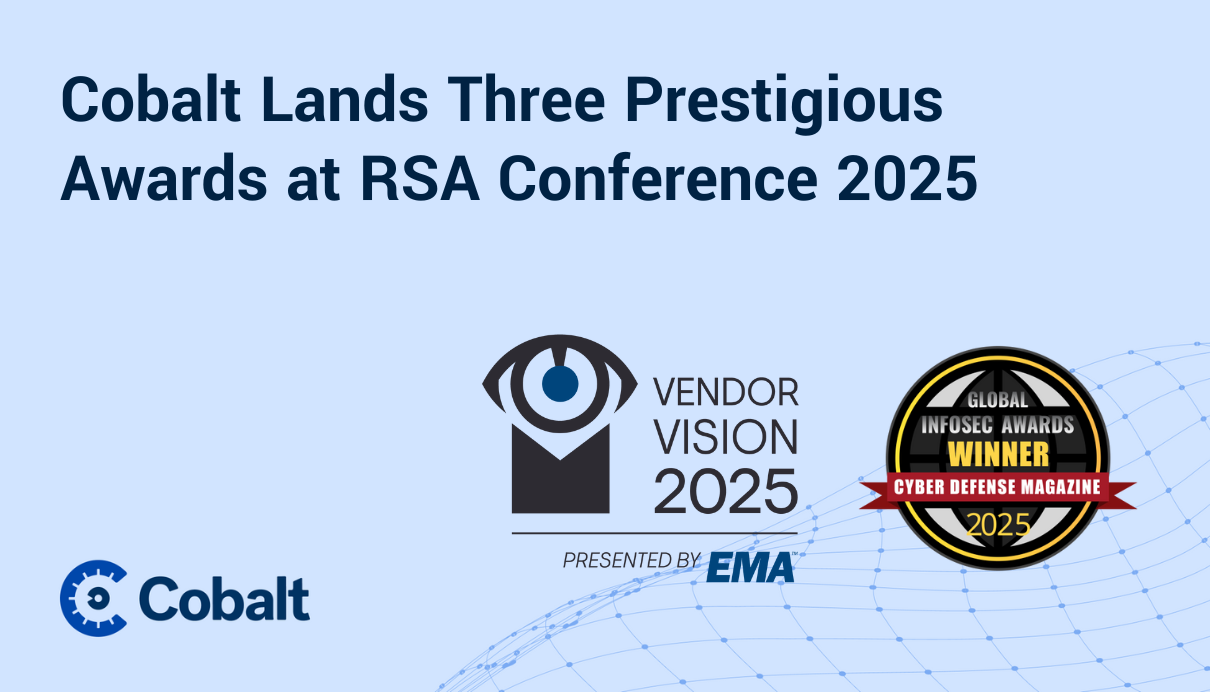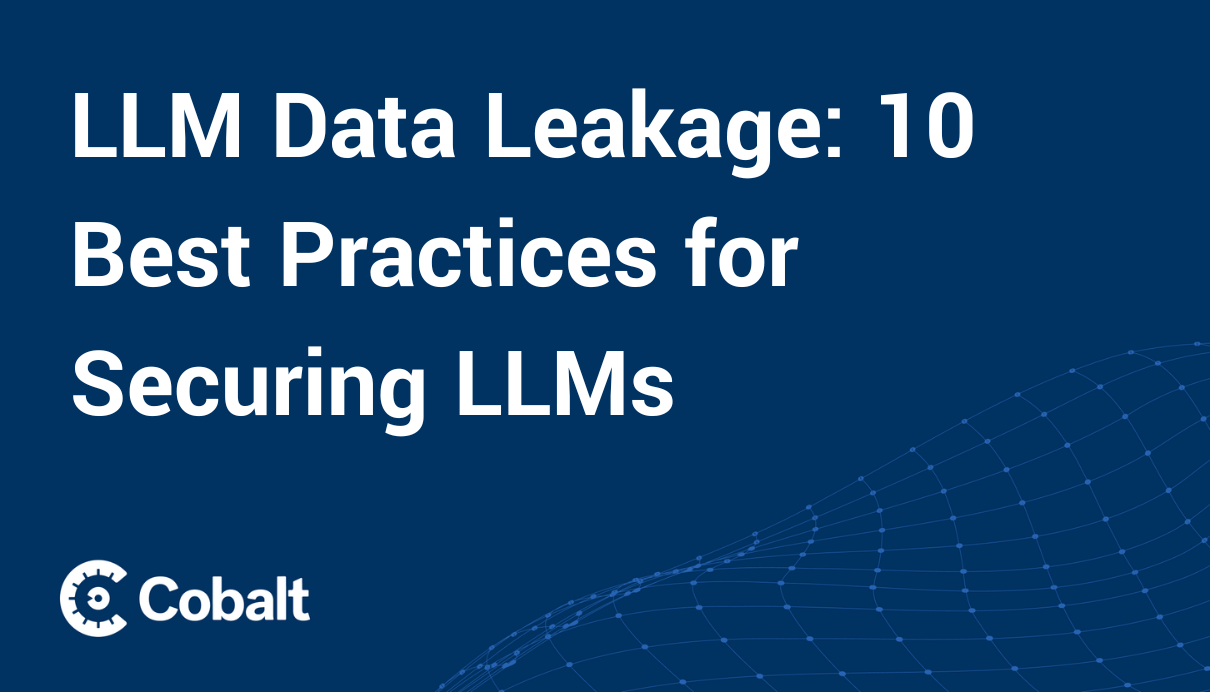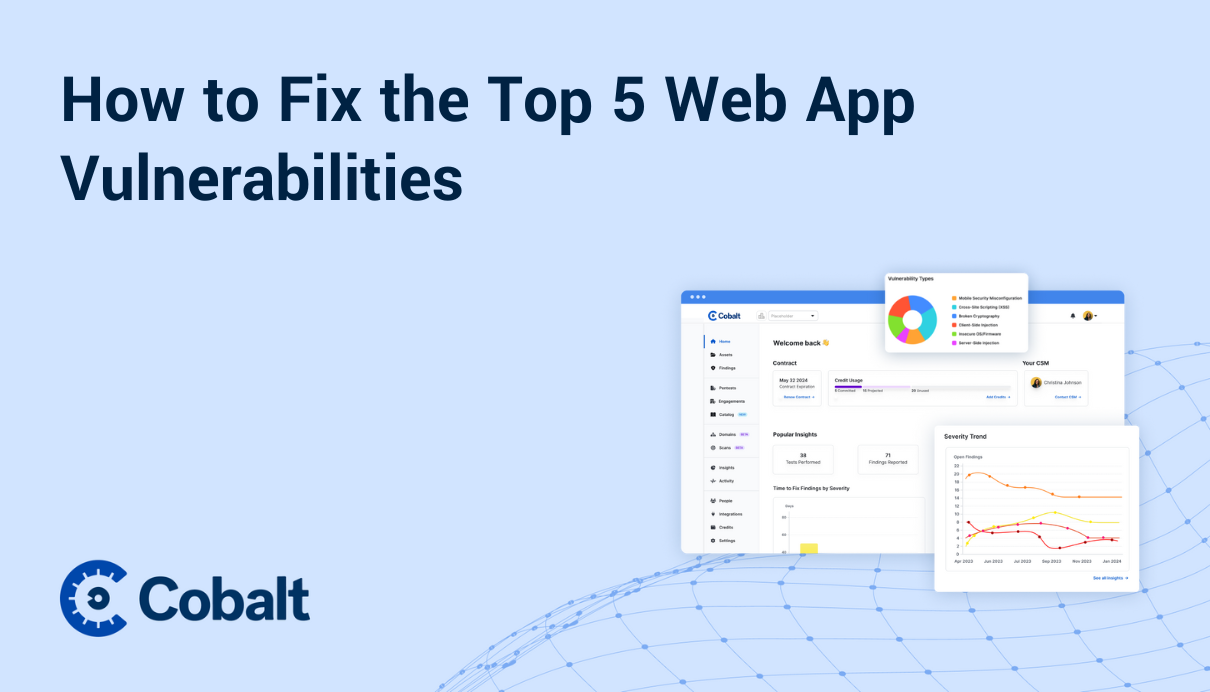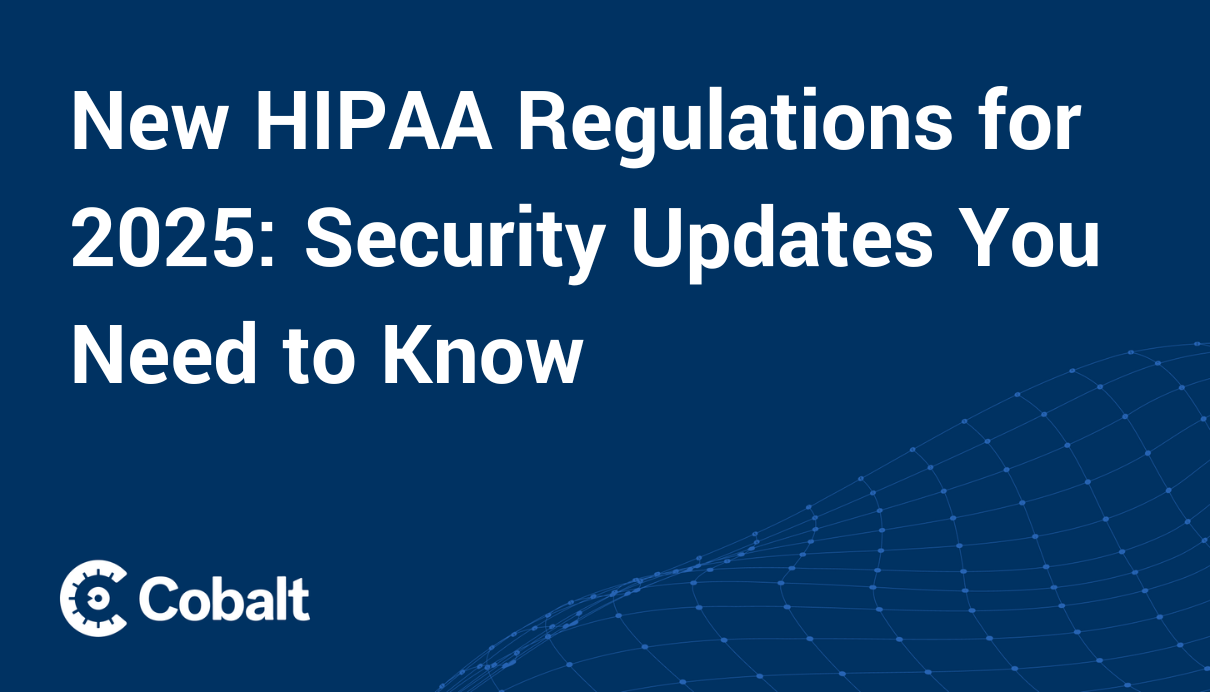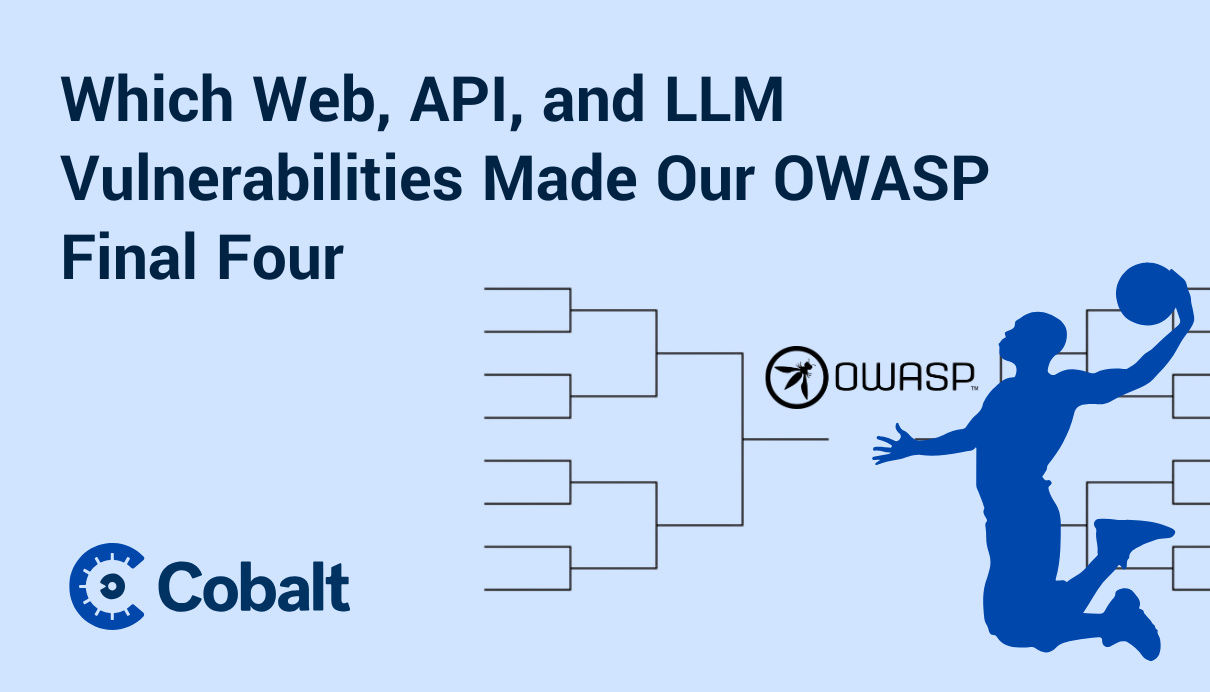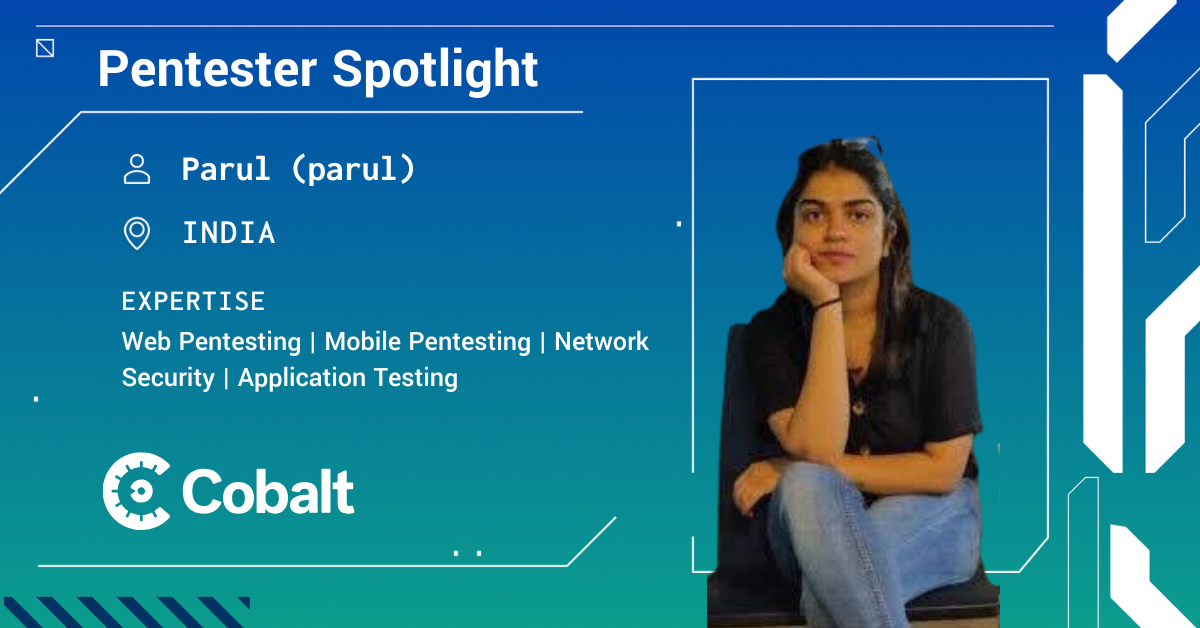-
Platform
-
-
Cobalt Platform
Modern offensive security platform
-
Dynamic Application Security Testing
Automated application security scanning
-
Pricing
Explore the flexible Cobalt credit model
-
Cobalt Platform
-
-
Services
-
-
Application Security
Secure your apps without slowing down development
-
Application Pentest
-
Secure Code Review
-
LLM Pentest
-
Network Security
Protect systems and data with offensive security
-
Network Pentest
-
Red Teaming
-
Application Security
-
-
Cloud Security
Secure your cloud infrastructure
-
Brand Protection
Safeguard your reputation
-
Digital Risk Assessment
-
Device Security
Secure your devices from threats
-
Device Hardening
-
IoT Testing
-
Cloud Security
-
-
Solutions
-
-
PtaaS
On-demand Pentesting as a Service
-
Goal-Based Pentest
Simulated attack to test your security defenses
-
PtaaS
-
-
Compliance
Comprehensive pentesting for compliance
-
Secure SDLC
Develop securely and deploy confidently
-
Offensive Security Program
Minimize risk efficiently and effectively
-
Compliance
-
-
For Small Businesses
Pentesting for growing business needs
-
For IT & Information Security Teams
Explore the benefits of an offensive security platform
-
For DevOps Teams
Explore the benefits of continuous security testing
-
For Small Businesses
-
-
About
-
-
Why Cobalt
Why сustomers сhoose Cobalt
-
About Us
Who we are
-
Leadership
The minds driving our mission forward
-
Cobalt Core
Community of skilled, vetted security experts
-
Partners
Explore Cobalt's partner network
-
Why Cobalt
-
-
Customers
Real customer stories straight from the source
-
Press
Read the latest news at Cobalt
-
Careers
Redefine and reimagine modern offensive security
-
Contact Us
Connect with a team member
-
Customers
-
-
GigaOm Radar Report
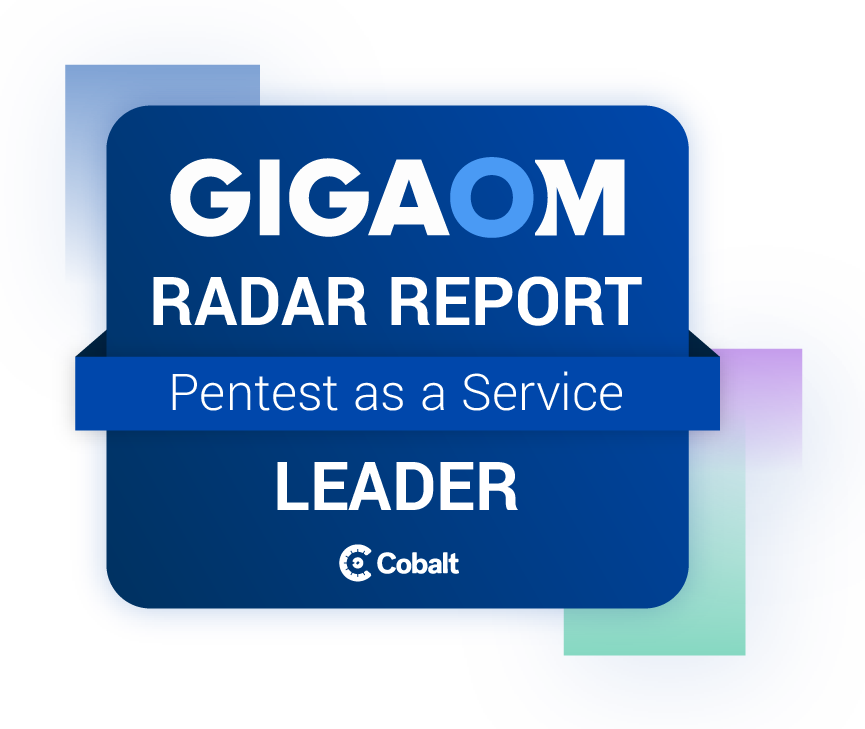 FeaturedDownload
FeaturedDownload
-
GigaOm Radar Report
-
-
Resources
-
-
Resource Library
Rethinking offensive security
-
Blog
Insights from security leaders, pentesters, and developers
-
Resource Library
-
-
Events & Webinars
Explore thought-provoking security topics
-
InfoSec Podcast
Explore the stories of cybersecurity experts
-
Events & Webinars
-
-
State of Pentesting Report 2025
 FeaturedDownload
FeaturedDownload
-
State of Pentesting Report 2025
-
- login
- get started
WEBINAR
Join us to explore what 10 years of data tells us about real risks during the State of Pentesting 2025 webinar.
-
Platform
-
-
Cobalt Platform
Modern offensive security platform
-
Dynamic Application Security Testing
Automated application security scanning
-
Pricing
Explore the flexible Cobalt credit model
-
Cobalt Platform
-
-
Services
-
-
Application Security
Secure your apps without slowing down development
-
Application Pentest
-
Secure Code Review
-
LLM Pentest
-
Network Security
Protect systems and data with offensive security
-
Network Pentest
-
Red Teaming
-
Application Security
-
-
Cloud Security
Secure your cloud infrastructure
-
Brand Protection
Safeguard your reputation
-
Digital Risk Assessment
-
Device Security
Secure your devices from threats
-
Device Hardening
-
IoT Testing
-
Cloud Security
-
-
Solutions
-
-
PtaaS
On-demand Pentesting as a Service
-
Goal-Based Pentest
Simulated attack to test your security defenses
-
PtaaS
-
-
Compliance
Comprehensive pentesting for compliance
-
Secure SDLC
Develop securely and deploy confidently
-
Offensive Security Program
Minimize risk efficiently and effectively
-
Compliance
-
-
For Small Businesses
Pentesting for growing business needs
-
For IT & Information Security Teams
Explore the benefits of an offensive security platform
-
For DevOps Teams
Explore the benefits of continuous security testing
-
For Small Businesses
-
-
About
-
-
Why Cobalt
Why сustomers сhoose Cobalt
-
About Us
Who we are
-
Leadership
The minds driving our mission forward
-
Cobalt Core
Community of skilled, vetted security experts
-
Partners
Explore Cobalt's partner network
-
Why Cobalt
-
-
Customers
Real customer stories straight from the source
-
Press
Read the latest news at Cobalt
-
Careers
Redefine and reimagine modern offensive security
-
Contact Us
Connect with a team member
-
Customers
-
-
GigaOm Radar Report
 FeaturedDownload
FeaturedDownload
-
GigaOm Radar Report
-
-
Resources
-
-
Resource Library
Rethinking offensive security
-
Blog
Insights from security leaders, pentesters, and developers
-
Resource Library
-
-
Events & Webinars
Explore thought-provoking security topics
-
InfoSec Podcast
Explore the stories of cybersecurity experts
-
Events & Webinars
-
-
State of Pentesting Report 2025
 FeaturedDownload
FeaturedDownload
-
State of Pentesting Report 2025
-
- login
- get started
WEBINAR

